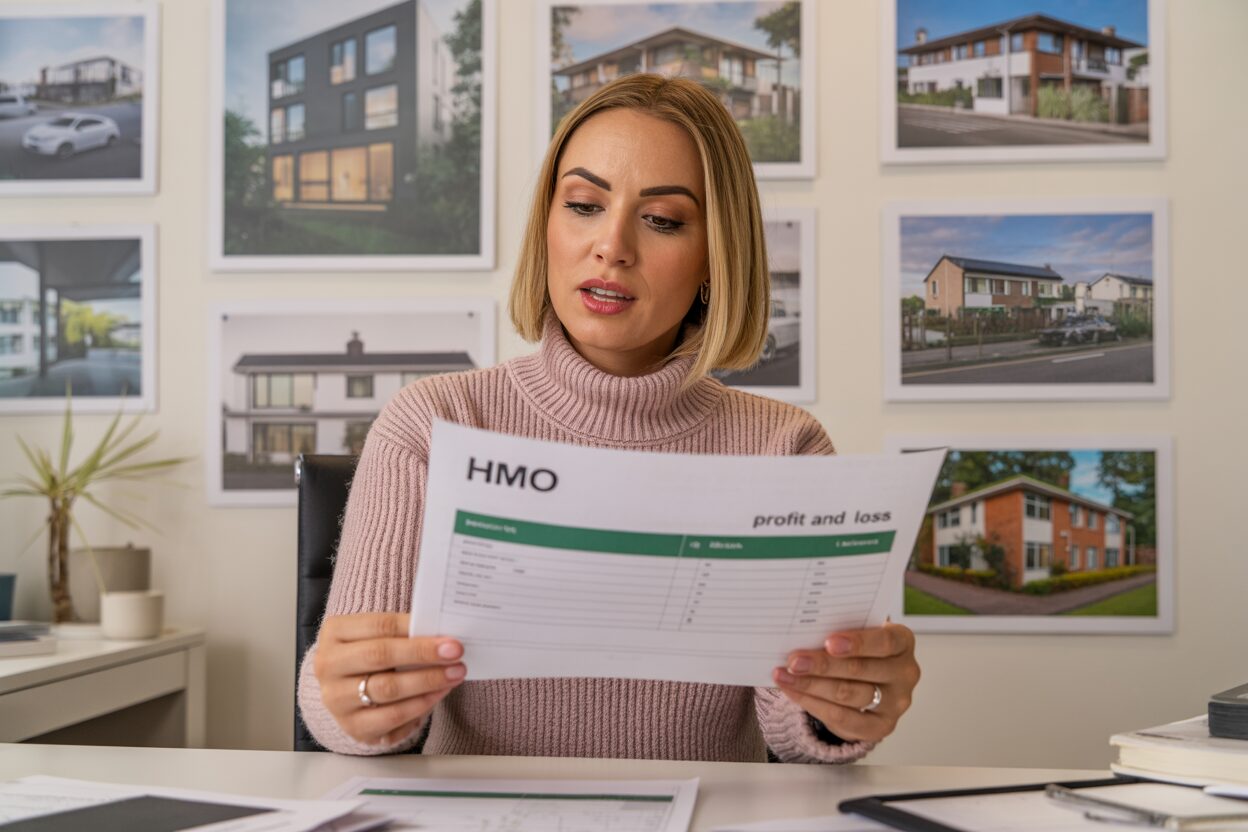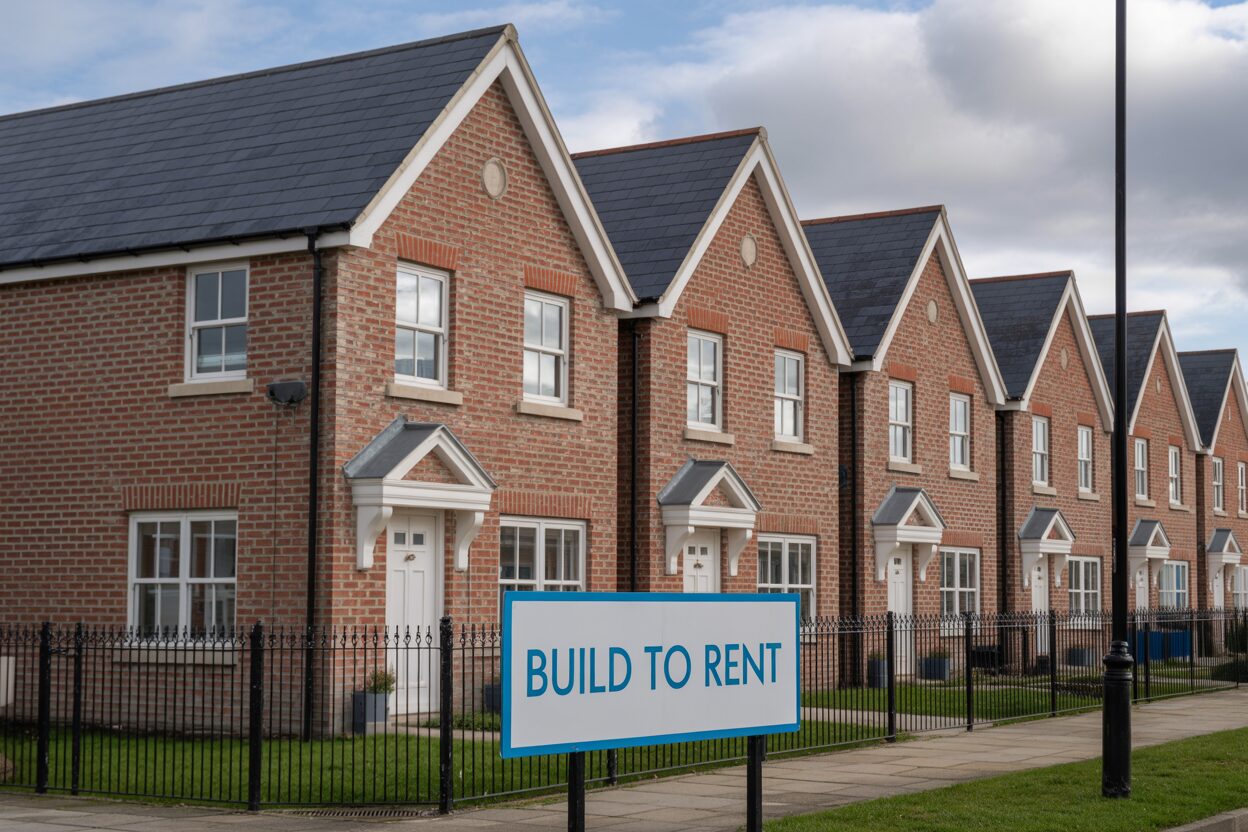
HMO rental properties earn far more in annual rental income than traditional buy-to-lets and holiday cottages. BUt it’s not just the yield that makes them interesting. Converting a home or flat into an HMO increases the property’s value so that it’s worth an average of 13%more than other houses in the same area. In some places, the leap in HMO property prices in some places is as high as 50%. So, when investors, landlords and developers ask us, “Is HMO still worth it?”, our answer is absolutely ‘yes’.
In this article, we debunk the claim that HMO investment property is not the attractive asset class it once was. We also show how HMO property investment is still a great way to build immediate passive income and long-term wealth.
HMO Architects explainer: HMO stands for house in multiple occupation. In its simplest form, you rent individual rooms to unrelated tenants within the same property. In most houses in multiple occupation, tenants share facilities like toilets, bathrooms, kitchens and communal spaces.
HMO properties vs buy to let vs holiday lets: the case for HMOs
HMO investing generates significant financial returns, especially on larger properties. Buy-to-lets and holiday lets perform well too. But, at the moment, the upsides HMOs offer property investors are much higher.
We’ll go into more detail later in the piece but here’s a summary of how all three options compare:
| HMO (better) | Traditional buy to let | Holiday property | |
| Typical return (gross yield) | The best at 10.4% and higher (Landlord Today) | Around 7.11%, highest since Feb 2011 (Paragon) | 8% average annual yield (Schofields) |
| Capital growth in property | Licensed HMOs sell at average 13% above local averages and up to 50% in some areas (Excellion Capital) | Usually no uplift other than uplift from property improvement | Usually no uplift other than uplift from property improvement |
| Income diversity | You spread the risk across multiple tenants | A void wipes out all rental income | A void wipes out all rental income |
| Void periods | You may have five occupied rooms and one void room so hit on income is minimal | You will lose money month after month on mortgage fees, council tax, etc unless you find a new tenant | Many holiday lets face significant low season gaps in occupancy and last-minute cancellations are common |
| How fast can you raise rent to reflect the market? | You can adjust room prices one by one to reflect moves in the market | Rental increases possible but you risk alienating long-term tenants | You can dynamically price your property to account for demand, competition and other factors |
| Management load | Higher. Strict compliance and multiple tenants’ interests to satisfy. | Low. One tenant agreement and simple compliance. | Highest. Guest operations, cleaning, laundry and listings management. |
| Remortgage options | Specialist HMO lenders let you borrow against the higher of the property value and income from tenants | Restricted. Lenders tend only to consider comparable properties within a target rent range. | Restricted. Lenders tend only to consider comparable properties within a target rent range based on projected holiday income and occupancy. Deposits and stress tests can be tighter. |
| Exit options | Many investors are keen to purchase extant HMOs, especially larger ones. You can also deconvert to appeal to the standard market. | Broadest options. Of interest to both investors and owner-occupiers. | Narrowest. Best chance of selling in tourist areas. In non-tourist areas, selling to investors or owner-occupers is your best chance. |
[Related article: HMO vs Holiday Lets & Airbnbs Property Investment Compared]
Upwinds in the UK property market for investors, developers and landlords
In the past 10 years, UK landlords have had many issues to overcome to stay profitable, including:
- Interest rates: Ten years ago, the interest rate was 0.25%. A 2-year buy-to-let mortgage fix was 3.32%. Now, interest rates are 4.00% (down from an even higher 5.25%) and a 2-year fix is 4.88%. So, the annual interest on a 2-year fix is now £3,280 higher.
- Section 24: You can no longer deduct interest on mortgage payments from profit. Instead, you claim a 20% credit. This means, even if you lose money, HMRC can still tax you.
- Barriers to entry: On Halifax’s index, prices are roughly 50% above 2007 levels. There is very little affordable, desirable housing landlords can buy to build a portfolio.
- Stamp Duty Land Tax: Now, instead of paying the same stamp duty as everyone else, landlords pay more. For a home costing £250,000, you’d pay £2,500 under the old regime in 2016. Now, that would cost you £15,000.
- Tougher lending: The government blamed lax lending for the housing market crash in the late 2000s. They ordered lenders to tighten the application process, so now approval depends on achieving high rent levels in comparison to mortgage payments. This is starting to ease slightly, but it still stops many landlords from getting a start.
On holiday lets, the government also abolished the Furnished Holiday Lettings (FHL) tax regime. Many councils now restrict the number of nights you can let out a property without a licence. Some councils charge up to 300% higher council tax, eating further into your profits.
HMO landlords have also been a target of new legislation. There is a new council tax system affecting HMOs. Planning permission is strict on Article 4 Direction homes and in conservation areas. There are also multiple size and health and safety restrictions on HMO properties.
There’s more to come, too. Watch out for more councils rolling out expensive selective licensing schemes. Plus, all rental properties may have to meet EPC C standard by 2030. For owners of older homes, adapting to meet this target will be very expensive.
Why HMO investing still makes sense
Despite the challenges, the HMO business model still makes a lot of financial sense. It’s a fluid market that you can invest in directly or through your pension funds. And they’re better bets than buy-to-lets and holiday lets for these three reasons:
1. High demand for affordable shared housing
UK private rents hit £1,343 in July 2025, up 5.9% year on year. With average UK wages at £3,514, rent now swallows up 38% of employee pay. That’s before Income Tax, National Insurance, council tax, utilities and other bills. There is a very tight squeeze on people’s personal finances right now.
For renters, a room in an HMO is cheaper than living on your own. Flatshare site SpareRoom features adverts including HMOs. According to their statistics, a room in the North East goes for £561 a month and a room in London £981. With council tax and utilities included in most HMO rentals, it’s an easy sell.
The first step to making money in HMO is choosing a target audience. Then, you convert a property up to the standards potential tenants expect. For example:
- Student HMOs: Base student HMOs close to campus in university towns. They expect clean, safe homes with decent broadband, study space, and furniture included.
- Key workers: Find a property by a hospital or school, close to where they work. They want quiet, functional rooms with reliable heating, good security, and bills included.
- Young professionals: They appreciate higher-spec accommodation near major city centres, business parks and great transport links are popular. [Related article: Top HMO Styles To Maximise Your Returns: Student, Social, Senior Citizen Housing & More]
Competition for rooms is fierce. SpareRoom reports an average of five would-be tenants competing for each room. In Sale, near Manchester, the figure is higher at 8.9 because of its tram links to the big city.
Demand is set to increase further, too. A RICS survey found landlord instructions down around 31%, at their lowest since April 2020 at the start of the pandemic. This means fewer homes to rent out and rising competition for rooms.
2. Higher rental yields compared to other investments
HMO investors and landlords price by the room, not by the whole property. One tenant leaving doesn’t mean you lose all income as other tenants continue to pay you. That pushes net yields above most single let properties where demand and costs allow.
In the table above, we show an average 10.1% HMO yield. In the North East of England, that figure is 15.1% and 11.8% in the West Midlands. This is the latest information from Lendlord:
| Region | Average property value | Annual rental income | Gross yield |
| North East | £200,000 | £32,000 | 16.0% |
| Wales | £200,000 | £26,000 | 13.0% |
| Yorkshire & Humberside | £190,000 | £23,000 | 12.1% |
| Scotland | £225,000 | £26,000 | 11.6% |
| East of England | £295,000 | £33,000 | 11.2% |
| South East | £430,000 | £48,000 | 11.2% |
| North West | £260,000 | £29,000 | 11.2% |
| Northern Ireland | £120,000 | £13,000 | 10.8% |
| West Midlands | £270,000 | £28,000 | 10.4% |
| South West | £400,000 | £38,000 | 9.5% |
| East Midlands | £230,000 | £22,000 | 9.6% |
| Greater London | £650,000 | £42,000 | 6.5% |
HMO Architects caveat: The table is a visual interpretation of Lendlord’s data. We have rounded the figures for average property and rental income to the nearest £1,000. The rental income assumes all HMOs are let today at current room rates. However, many purchase prices and mortgages in the table will be for historic transactions. So, you should treat these yields as indicative only and with a margin of error.
3. Limited competition for prime HMO investment property
Good buildings for HMO conversion are hard to find, especially in Article 4 areas where permitted development is blocked. Most landlords avoid major works and prefer either buy-to-lets or already-converted HMOs.
That means less competition for unconverted stock, if you’re willing to take on the work and occasional planning approval process.
Finished HMOs often sell for 13% more than local values, sometimes more in cities. If you can handle the build, you can buy cheaper and create the value uplift yourself instead of paying a premium for turnkey deals.
HMO Architects: your partner in the HMO market
HMO property investment is a proven strategy and the statistics and our experience back up our claims. Few long-term investments offer the same passive income and wealth building opportunities. And now as renters are squeezed out the buy-to-let market, demand for HMO rooms is likely to continue to strengthen.
We have worked with over 750 landlords and have a 97% success rate in getting planning permission and HMO licenses granted. That’s across many local authorities (200 and counting) on projects worth over £100m.
Here are some of our recent HMO successes for clients:
- Flat 107, London (4 units): We converted a conservation-area maisonette above a print shop into a four-bed HMO, giving every room an en-suite wet room and threading modern services through heritage constraints. Result: value up from £550,000 to £950,000 and £57,600 pa in rent on an 18-month programme.
- Fortescue Road, London (6 units): We secured approval for an unusual ground-floor extension and added a dormer under PD, then re-planned the home from three to six bedrooms. The planning-led strategy matched the street pattern and unlocked a value rise from £900,000 to £1,600,000 with £7,200 pcm rent, delivered in 12 months.
- Elderbush Inn, Swansea (12 units): We reimagined a large family home as a 12-bed Sui Generis HMO with mostly en-suites, maximising the loft and turning a car port into a tenant terrace to avoid heavy structural works. Outcome: value up from £250,000 to £900,000 and £7,200 pcm rent (£86,400 pa gross).
We offer savvy investors and developers a start-to-finish, featuring services like:
- Investment strategy calls: Ryan Windsor was 17 when he began building his own extensive property portfolio. He’s helped over 2,200 clients across his career. Book a strategy call with Ryan and get bespoke advice on how to increase your net value and income with HMO properties.
- Feasibility study: Giovanni Patania is our Architect Director. He and his team are available to talk to you on all pre-buy and design feasibility issues related to a property purchase you have in mind. This includes factoring in compliance costs like fire safety measures and carbon monoxide alarms.
- End-to-end service: Access a range of key services under one roof. We provide architecture design and planning to building regs and interior design.
- Wider network: Plug into our pool of trusted professionals. Access experts like property development finance brokers to arrange a competitive HMO mortgage at the best possible mortgage interest rates.
Find the best accountants to help you extract the maximum tax benefits and take advantage of every tax deductible. If you want to manage your own HMOs, get in touch with specialist letting agents who can help you with issues like tenant screening and general property self management.
Check out our detailed HMO legal FAQ and find out more about the true cost of unlicensed HMOs on our website. Discover whether HMOs, buy to lets or stocks and shares deliver the best return. When you get in touch, ask Ryan about his BRRR method and how to use it as your investment strategy.
View our range of development finance case studies to see how we’ve helped clients turn their ideas into sound investments. Read customer stories on HMO, flat, holiday let and housing projects.
Call us on 01223 776 997 or email us directly.
Ryan Windsor, Development Director and co-founder of HMO Architect, brings over 15 years of specialised experience in HMO development to the table. Having consulted on nearly 2,200 projects, Ryan is a highly seasoned HMO landlord with a vast and influential property network. He began his real estate journey at just 17, rapidly amassing a wealth of experience that sets him apart in the industry. Beyond his professional successes, Ryan is passionately dedicated to giving back, leading numerous charitable initiatives that make a meaningful impact on local communities.




